
</title><meta name="robots" content="noindex">What is Konpeito: Japan’s best sugar candy?
It's always fun to find a new delicious treat for your sweet tooth. There are countless sorts of sweet treats available all across the world, yet regrettably it is difficult to sample them all. Konpeito, a type of traditional Japanese candy, is one Japanese confection that should be on every sugar addict's bucket list.
What is Konpeito?
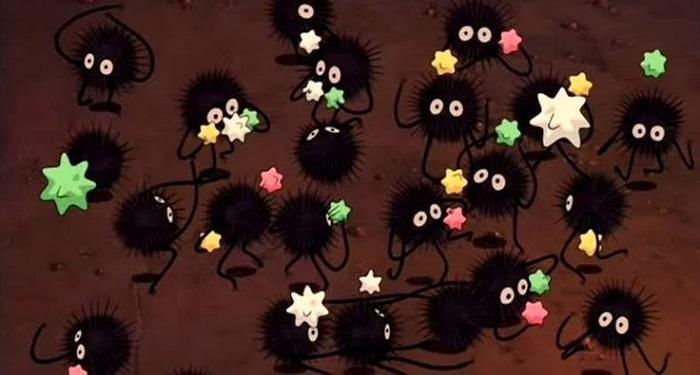
Konpeito appeared in both the Studio Ghibli film Spirited Away and episodes of Pokémon, so if you enjoy anime from that studio or Japanese culture in general, you have definitely seen him before.
Konpeitō (金平糖, こんぺいとう) is a rock sugar candy in the form of a star. Early in the 16th century, Portuguese missionaries brought it to Japan. Due to its distinct confetti appearance and assortment of colors, Konpeito is described as "Kawaii," which means "cute."
The Portuguese term "confetti," which means candy or confection, is where the name of this particular sort of Japanese sweets originates. Plain sugar, water, food coloring, and a variety of tastes make up the bulk of Konpeito.
History of Konpeito
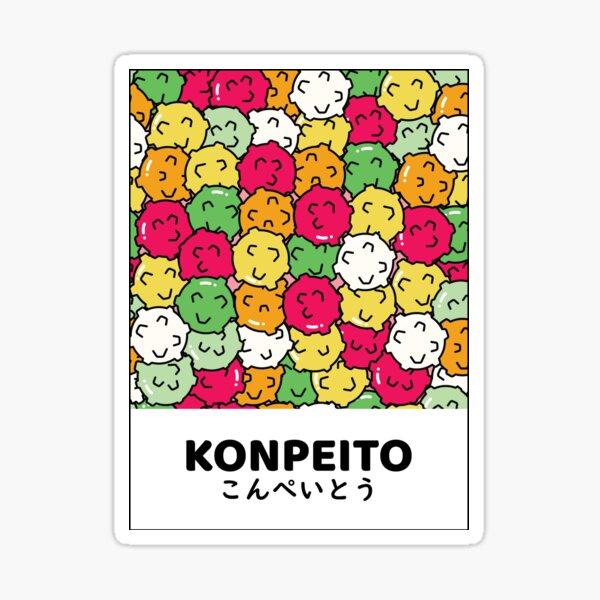
Portuguese traders brought the method for making sugar candies to Japan at the beginning of the 16th century. In Japan, the infrastructure and technologies for refining sugar were still developing. Konpeit was extremely rare and expensive because it requires a lot of sugar. A glass flask of konpeit was delivered to Oda Nobunaga in 1569 by a Portuguese missionary named Luis Fróis in order to win permission for Christian missionary activities.
The Sugar Plum Fairy from The Nutcracker was translated into Konpeit no Sei (, "Fairy of Konpeit") during the Meiji period, at which point konpeit had already become culturally prescribed as one of the standards of Japanese confections.
How is Konpeito made?
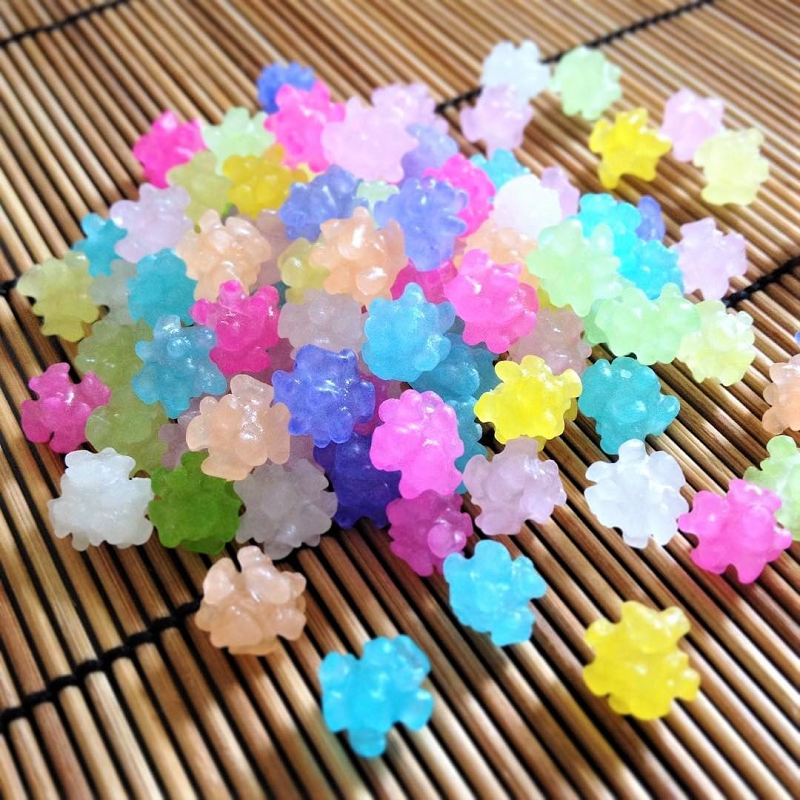
Many people consider the creation of Konpeito candies to be an art. They are produced by boiling a rock sugar ball and continuously drizzling sugar syrup over it. The familiar confetti-like shape has a core made up of a grain of coarse sugar and is created by the unevenness of the sugar layers.
The sugar crystals are crunchy and have a simple sugar flavor, making them enjoyable for people of all ages to eat.
One noteworthy quality of Konpeito is its ability to resist high temperatures without melting or affecting the taste of the candy. It can retain its quality for up to thirty years if properly packed and stored.
Konpeito used to take months to make because of the outdated techniques of using coal for heating and the laborious nature of the entire procedure. However, the Japanese star candy now takes around 7 to 14 days to complete, thanks to technological advances.
Now, the colored Konpeitos are prepared in a sizable inclined rotating pot known as a "dora," and the colorful star bits are formed by gradually adding drops of syrup.
What Does Konpeito Look Like?
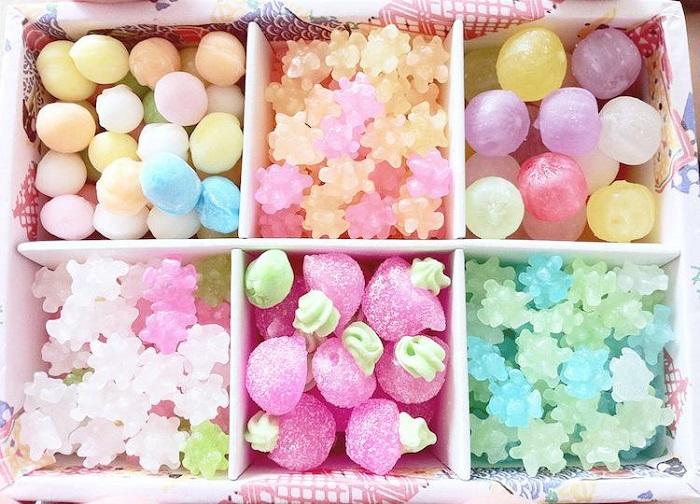
Konpeito comes in small round shapes with tiny pointy 'spikes' (don't be scared they are not sharp and won't sting you), making them look like little spherical stars. They come in various colors, such as white, pink, yellow, green, blue, etc. Like many traditional Japanese sweets, the colors are often elegant and subdued, mostly in pastel shades rather than gaudy or overly vivid colors.
The rough 'spikes' or 'bumps' on the surface of Konpeito, which result from their particular manufacturing process, give them an adorable and unique appearance. Since they are so small (5 to 10mm in diameter), they are not packaged as single pieces but as packets, boxes, or bags containing one to a few hundred grams of multiple colors of Konpeito.
According to Nakata Tomoichi, researcher of the mathematical aspects of Konpeito and 'Konpeito Fan Club' founder, there are specific characteristics to look for in a Konpeito to distinguish the most high-quality ones.
- An overall shape that is as close as possible to a sphere (not flat or oval)
- The number of 'spikes' or 'bumps' (27 is the ideal number)
- The more translucent, the better (higher opacity means higher concentration of cornstarch)
- Shades of colors that are more 'pastel' than 'neon.'
- Crisp and dense texture rather than light and crumbly texture
What does Konpeito Taste Like?
Despite their various colors, the majority of Konpeito are just plain sugar. Having said that, modern Konpeito are also manufactured with distinctive flavors. These hand-crafted, artisan Konpeito are available in a variety of flavors, including Yuzu, Matcha, Strawberry, Plum, Orange, Banana, Plain Soda, Peach, Pineapple, Vanilla, etc. Konpeito is made by a variety of specialized Wagashi makers since it is regarded as a form of traditional Japanese sweet confection known as "wagashi."
Varieties of Konpeito
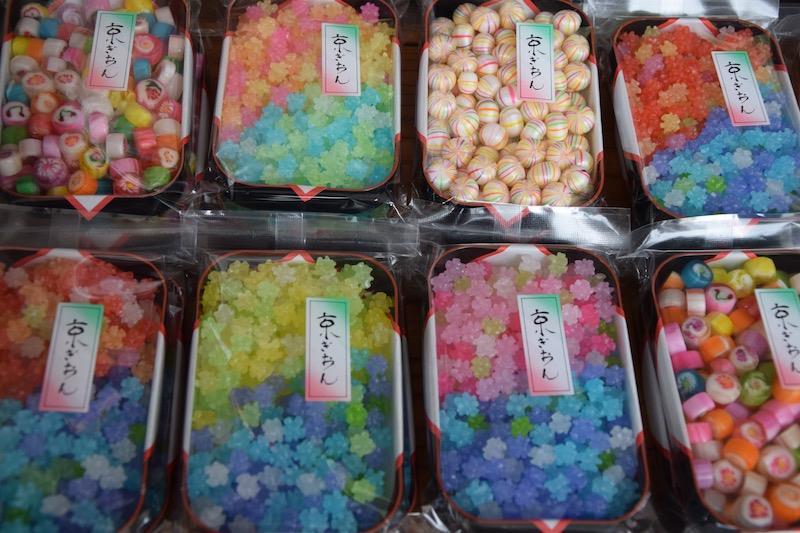
As mentioned above, although Konpeito comes in many colors, the taste of each candy used to be relatively the same. However, today it comes in flavors such as strawberry, mango, vanilla, plum, peach, yogurt, matcha and more. Varieties can be popular at different times of the year, reflecting seasonal flavors or celebrating different occasions.
Some varieties that you will find seasonally in Japan include:
- Chocolate – Valentine’s Day
- Brandy – Father’s Day
- Sake – Year-end gift (November)
Where to Buy Konpeito
You should go to Ryokujuan Shimizu, the only shop in Kyoto that specialized in high-quality Konpeito, for this particular sweet. Ryokujuan Shimizu is a family-run company that was founded in 1847 and is currently run by the fifth generation. Konpeito was first offered in cinnamon and tea scents, but it is now offered in a variety of hues and flavors. Because of the store's popularity, there is frequently a line of customers waiting to order Konpeito outside the establishment.
The good news is that you don't have to travel all the way to Japan to sample these Japanese treats. If not, you can get the traditional Japanese sugar candy online from a variety of vendors. You might be able to find a bag of Konpeito in your neighborhood Asian market.
Fun facts about Konpeito
Konpeito candies are included in both the Emergency Food Ration Tins from the Japanese Ministry of Defense and the Combat Ration Tins from the Japan Ground Self-Defense Force, in addition to hard tack bread/biscuits and other food items. The candies assist provide the calories needed for activities, but they also encourage salivation, which makes it simpler to chew the dry bread. Each white emergency ration bag will contain 150g of little dry bread, with 8 whites, 3 reds, 2 yellows, and 2 greens as standard, equivalent to at least 15g to be put in the bag, according to the Ministry of Defense's regulations. It is believed that offering the "colorful and joyful" Konpeito will also lessen the occasionally felt stress during a tragedy.
Konpeito is frequently served in elegant candy boxes called bonbonniere, which is derived from the French word bonbonnière, which means candy box, for ceremonies like marriage and childbirth. At shrines and temples, it is presented as a gift in exchange for prayers. Since the Meiji Constitution anniversary ceremony in 1889, giving bonbonniere has been a tradition and is considered a good luck charm. For more than 130 years, the Japanese Imperial Family has given these Onshino Konpeit as the recognized "Welcome" gift.
Get yourself some Konpeito from our ZenPop Snack box, where we regularly feature some original flavors from Japan!

